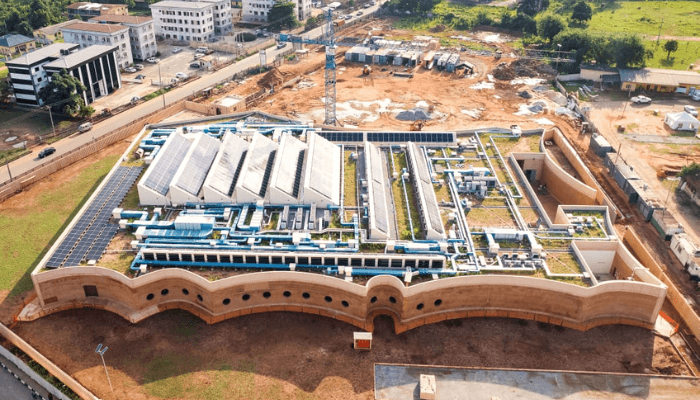How MOWAA sparked a cultural reckoning in Edo state
In Benin City, a project that once symbolised cultural rebirth has become the epicentre of a storm. The Museum of West African Art (MOWAA) was conceived as a bridge between the Benin Kingdom’s glorious past and a confident, contemporary Nigeria. But what was meant to celebrate heritage is now caught in a tangle of politics, tradition, and questions of ownership.
At the heart of the matter is the Oba of Benin, Omo N’Oba N’Edo Uku Akpolokpolo, Ewuare II, who recently declared that MOWAA should be recognised as the Benin Royal Museum. Speaking through a statement reported by The Nation, the revered monarch reminded the public that the project was originally conceived under his authority to house the artefacts looted from Benin during the 1897 British invasion. To him, any attempt to rename or reposition the museum as MOWAA sidelines the Benin Kingdom’s rightful role as custodian of its cultural treasures.
Edo State Governor Monday Okpebholo seems to agree. During a recent courtesy visit to the palace, the governor aligned firmly with the Oba’s stance, pledging that the project would revert to its original name, the Benin Royal Museum. He noted that the project was initially envisioned as a royal gift to the Oba, and his administration would work closely with the palace to complete it in that spirit. The governor subsequently set up a committee to clarify the museum’s governance structure, re-engage donors, and realign the project with its royal origins. Members of the committee include former Governor Adams Oshiomhole as Chairman, Iryn Omorogiuwa as Secretary, Cecil Esekhaigbe, a retired General, Lucky Imasuen, Osagie Ize-Iyam and Roland Itoyah Otaru.
To understand how this rift emerged, it helps to revisit how MOWAA began. Conceived in 2020 as an independent, non-profit cultural institution, MOWAA aimed to do more than display artefacts. It was designed to serve as a research, conservation, and training hub, a statement that Africa could build and sustain world-class institutions on its own terms. The timing was critical: conversations about the restitution of looted African art were gaining global traction.
The Edo State Government under former Governor Godwin Obaseki embraced the vision, contributing about ₦3.8 billion to the project. The museum was promoted as part of a broader cultural renaissance that could turn Benin City into a global heritage destination. Yet with a change in government, questions have arisen. The new administration has asked why the state holds no equity stake in the museum, who owns the land, and whether it was appropriate to invest public funds in a trust operating independently of state control.
MOWAA’s trustees argue that the model was intentional. Independence, they say, was necessary to safeguard the institution from political cycles and assure global partners of its professionalism. The state’s contribution, they insist, was cultural support, not a financial investment to yield control or profit.
The new leadership sees it differently. In their view, a project partly funded with taxpayers’ money must remain accountable to the public. To them, MOWAA’s independence looks more like exclusion.
The Oba’s intervention adds yet another layer. In Benin, heritage is inseparable from monarchy, as the palace is both the living symbol and the spiritual guardian of culture. The Oba’s insistence that the museum return to royal oversight is not merely ceremonial. It reflects a conviction that the soul of Benin’s heritage cannot be detached from its throne. Many in the city agree, arguing that restitution is incomplete if the returning artefacts are not preserved under royal authority.
But others, including some artists, curators, and scholars, worry that this shift could compromise MOWAA’s independence and international reputation. For them, what once looked like a model for African-led museum management risks being pulled back into the very structures it was designed to rise above.
Governor Okpebholo’s committee now faces the delicate task of balancing these forces: traditional authority with institutional autonomy, and public accountability with cultural stewardship. Meanwhile, MOWAA presses ahead with plans to open its first campus on November 11. Its inaugural exhibition will expand on Nigeria’s 2024 Venice Biennale Pavilion, showcasing historical and contemporary works spanning 3,000 years of West African creativity.
Whether it re-emerges as a symbol of unity or a casualty of politics will depend on whether its key actors, from the palace to the government to the museum’s trustees, can view culture not as turf to control, but as a shared inheritance to preserve.

